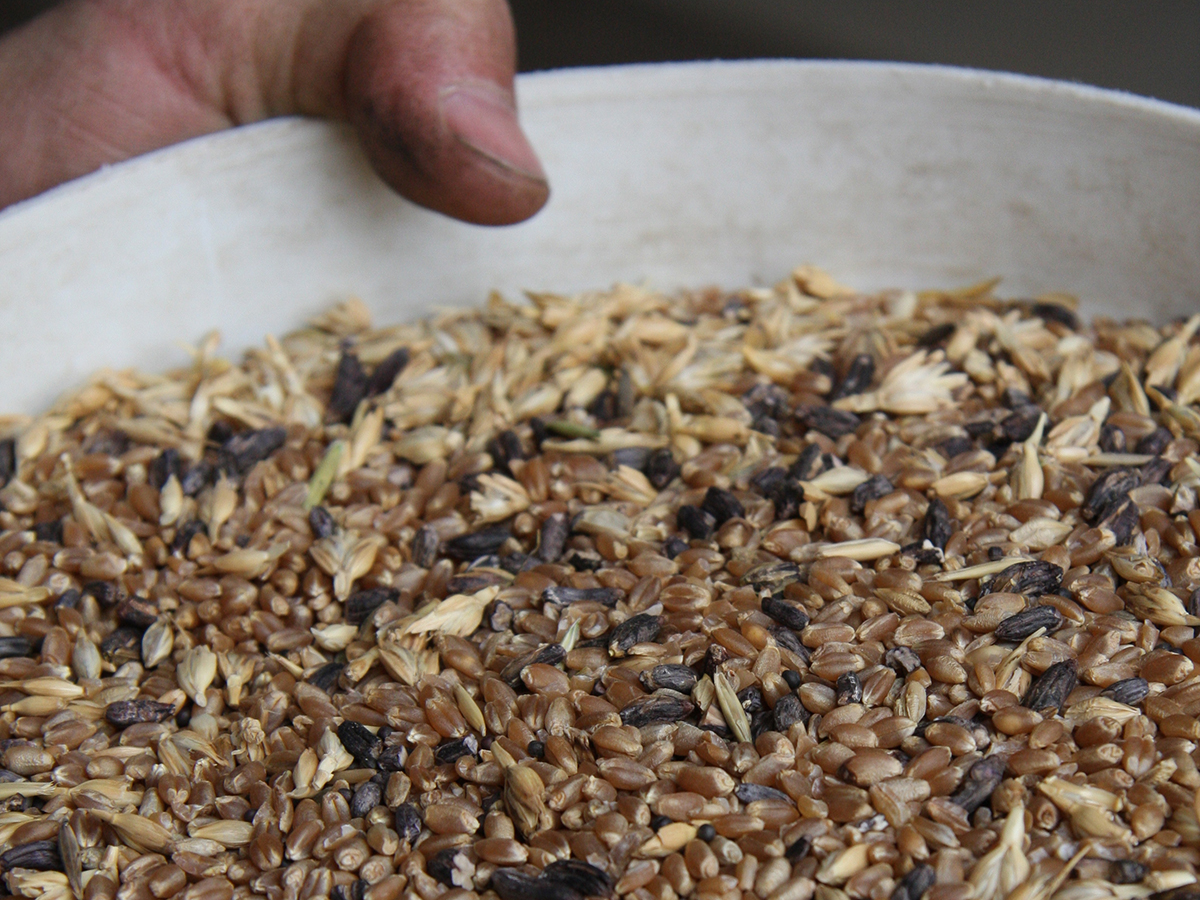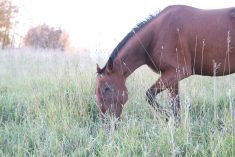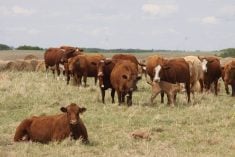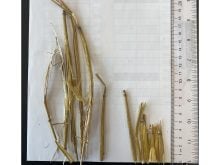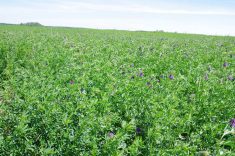A wide range of projects will benefit from recently announced research funding from the Saskatchewan and federal governments.
They announced $6.9 million for livestock and forage research. Industry partners contributed another $216,000 to co-fund specific projects.
Vanessa Cowan from the Western College of Veterinary Medicine is using her $274,700 allotment to investigate the effects of ergot alkaloid mycotoxins on blood flow in cattle and whether a feed-based strategy could mitigate any adverse effects.
Read Also
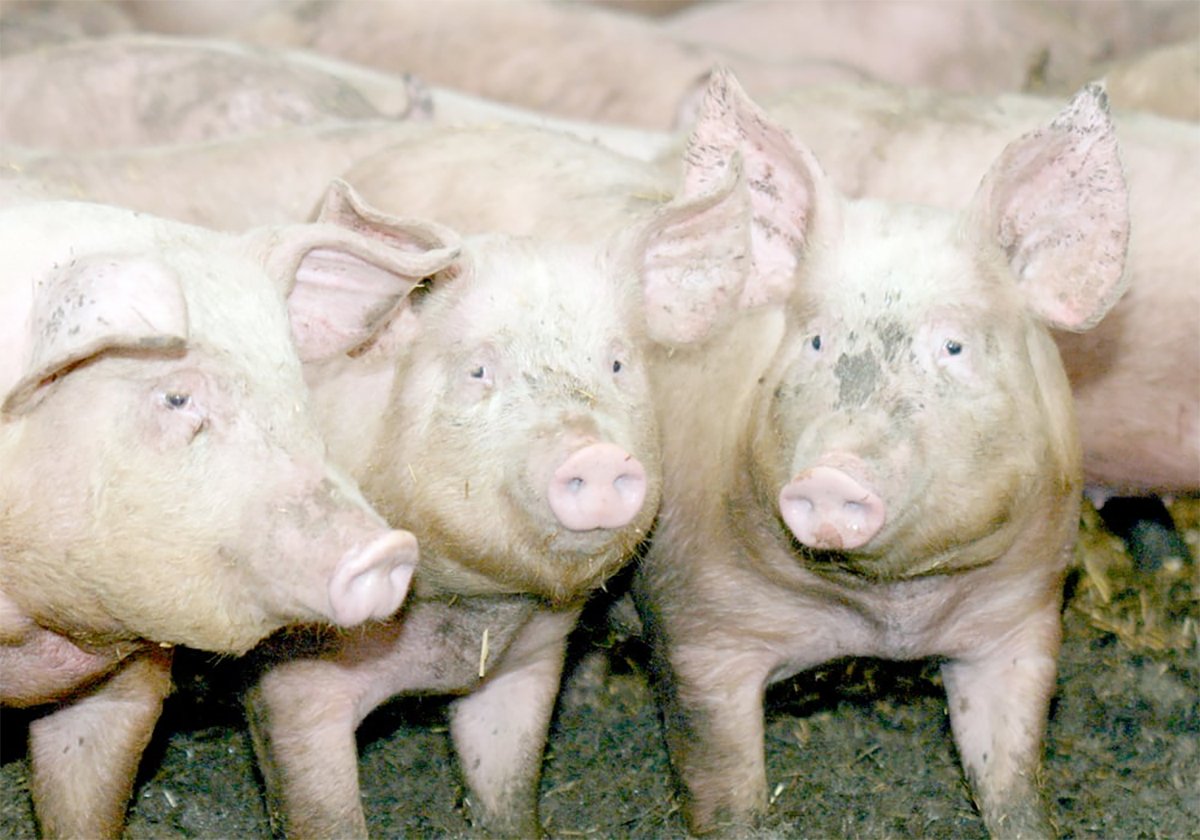
The Western Producer Livestock Report – November 13, 2025
Western Producer Livestock Report for November 13, 2025. See U.S. & Canadian hog prices, Canadian bison & lamb market data and sales insights.
She said ergot is commonly found in feed and continues to be a yearly problem. Cowan is affiliated with Prairie Diagnostic Services, which tests for ergot presence.
“During these difficult times, when finding non-contaminated feed could be difficult, the hope of my research is that we could offer a strategy where, if we add something called isoflavones, potentially, these could reduce the negative effects of ergot on cattle production,” she told reporters at the Saskatchewan Beef Industry Conference.
Wet, cool springs favour ergot production and even though many areas have experienced drought in the last several years, it can still be a problem.
“Part of the problem with ergot is if you have it one year, the little ergot bodies that are produced can fall into the ground over winter and spores will germinate when conditions become favourable again. So just because there’s a drought year doesn’t necessarily mean you can’t have an ergot problem in the future,” Cowan said.
Not many cattle have been falling ill due to ergot, but there can be lost production from it and mycotoxin ingestion in general.
“Ergot particularly will cause blood vessels to constrict in the cattle, so in the winter that makes it hard for them to maintain blood flow to their limbs and their ear tips and their tail tips,” she said.
“Conversely, in the summer, when it’s really hot and they can’t properly dissipate heat because of the peripheral blood flow constriction, the animals may be more prone to heat stress even when conditions are not overly hot outside.”
Cowan’s project will take three years and be done at the Livestock and Forage Centre of Excellence.
Razie Khorshidi is a postdoctoral fellow at the University of Saskatchewan who will conduct a four-year project looking at the application of genomic tools, or selection indexes, for commercial beef production. The project received $326,000 in funding.
“This kind of selection may actually be very critical for the future of your profit because what you see exactly doesn’t mention your genetics,” she said, referring to visual assessment.
Khorshidi said Saskatchewan could pioneer commercial genomic selection in Canada, noting the United States has had a program since 2016.
“This is actually about incorporating traits of economic importance for terminal destination or maternal destination in bull selection programs, especially for commercial producers that can’t afford those kind of verified bulls in seed stock production,” she said.
The application would create a reference population of data that producers could use as a guide to confidently select and verify genetic values.
Establishing a genomic data bank that uses Canadian data is important, Khorshidi added. Right now all the purebred data from Canada goes to the United States, where it is all mixed together.
Dinesh Dadarwal works in large animal clinical sciences at the vet college, and for the last two years has been testing sensor technologies for breeding and calving management with funding from the Agriculture Development Fund (ADF).
The idea is to address the labour shortage in Western Canada by using equipment to detect when a cow or heifer is in heat. The technology uses a collar around a bull’s neck.
“There are some sensors that can be used both for artificial insemination and for natural breeding purposes, which is more commonly used in Western Canada,” he said.
The research is also examining a camera-based system that claims it can detect calving and send a message to producers. Dadarwal said that will be useful for producers eventually, but so far the available systems haven’t been validated.
“Right now we are venturing into the aspect of actually using the images and the videos that we have gathered for the last two years and use them to build some algorithms which are not out there,” he said.
The team is collaborating with computer scientists and looking for private companies to do the same.
Dadarwal said there are calving sensors on cows’ tails now, but that is labour intensive and cameras would reduce that.
This will be the second year of the projects on several hundred head. He said so far no bulls have lost collars, but there are occasional losses of the associated ear tags in the females.
The U of S is getting the lion’s share of the 2025 funding at nearly $5.2 million for 21 of the 30 projects approved by the ADF.
The breakdown by species in terms of the number of projects is seven for beef, two for beef/dairy, two dairy, one environment, six each for forage and swine, three for multiple species, two for poultry and one for honeybees.
Contact karen.briere@producer.com


